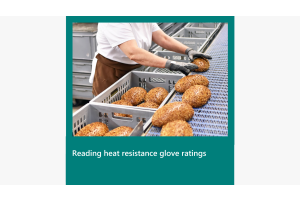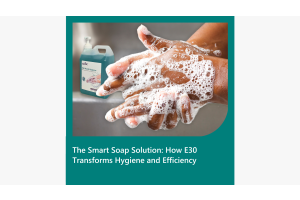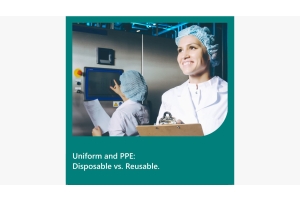Blog
-
July 11, 2022
What is the best hearing protection?
Hearing protection may be necessary if machinery is used in your processing plant. Hearing protection is critical to reiterate due to its long-term impact on your team members.
Hearing protection is beneficial, but what is the best option?The two most common types of hearing protection are earplugs and earmuffs. Earplugs are inserted into the ear, while an earmuff is worn over the head and covers the ear. However, both can leak noise if not correctly applied. Earmuffs are cost-effective and reusable, but the hygiene excellence of earplugs is unsurpassed.
Earmuffs- Compliance – It is easier to check visually that they are in place and worn correctly.
- When appropriately worn – they are a secure fit, and there is a lower risk of them falling off and into food products.
- Reusable – cost-effective although less hygienic
- Easier to
-
June 24, 2022
Most (if not all) of those who work in the Food Processing industry is familiar with hairnets. They can also be referred to as bouffant or mob caps, berets, or even caterpillar or crimped hats. The primary purpose of a hairnet is to prevent hair from falling into production. There can also be vast differences between the various types of hairnets.
Here is a list of the standard features across the various types of hairnets to help ensure maximum hair containment:
- Size
- Shape
- Material
- Weight of material
- The elastic
- The weld
- The colour
- Packaging
How can these features impact you?
Firstly, the size. The size depends on the amount of hair which will determine the size hairnet required. The two main measures are 21” and 24”; team members with long hair will find 24” hairnets are more suitable as they hold the weight more comfortably. -
June 10, 2022
What is a vinyl glove? A vinyl glove is made from Poly Vinyl Chloride (PVC). It is typically a cheaper quality thin glove which is worn in instances where regular changing of gloves is required. Usually due to environments where multiple ingredients in use, cannot mix and become contaminated.
Vinyl gloves have gradually been replaced with Nitrile gloves. Nitrile is a synthetic rubber which is stronger, thicker and food safe.
Vinyl gloves are not as popular as they were, due to their quality. The material tends to be less elastic and breaks frequently, often when first donned. In addition to this, the material is slightly porous, meaning they can absorb moisture which is a contamination risk. However, as they are only worn for a short period of time, this often isn’t too serious.
A mixed vinyl and nitrile glove is often more appropriate as the quality is enhanced. Besides the strength the glove is more flexible, this means donning the glove
-
May 30, 2022
The food processing industry has valued silverlined gloves for many years. While Nitrile gloves have often replaced them, silverlined gloves are still preferred in many circumstances. There are a few points that make silverlined more suitable for various tasks.
Let’s start with the term silverlined. This is an Australian term, which refers to the smooth ‘grey’ glove interior. This smooth texture is designed to make donning more efficient. The exterior of the glove (typically blue in the food industry) has a raised surface texture. Some common textures are honeycomb, fish-scale, pebble, sand patch or diamond. These are all excellent forms of grip to ensure ease of use... Sand patch is typically used in wet environments, while fish scale and diamond are more suitable for a dry environment, although these are interchangeable. Silverlined gloves are often referred to as ‘washing-up gloves’ as they are used in a domestic environment. They are the ideal heavy weight disposable
-
May 17, 2022
Long gloves or long cuffs have become a valued part of the food industry, they help to keep sleeves tucked in, extended reach, along with cleaner more protected hands. A standard long cuff glove typically reaches a further inch up the wrist. Extra-long gloves however, extend well beyond this to the elbow or further. The additional length has many beneficial purposes for the food industry. The extra reach means your team members can use them for tasks such as cleaning equipment. Allowing protection from chemical splashes, which then also protects not only direct skin contact but also uniforms and clothes.
The only alternate for a long cuff is a sleeve cover. While sleeve covers are excellent for everyday use in a food factory, specialised tasks require extra protection which is why long gloves are the best suited product. The main advantage is no gaps at the wrist, allowing complete splashproof protection for the entire arm. The nitrile chemical-resistant
-
May 09, 2022
Keeping the floor clean is a challenge many companies face. No matter how proactive and the number of measures implemented, the floors still need to be cleaned frequently. Mops have evolved from the traditional string-mop and bucket to modern microfibre continuous stringed or flat mops. While mops have advanced over the years, the old traditional styles remain available.
So which options best suit your production area?
Ideally your mop should be an effective floor cleaner and needs to be made from an absorbent durable material. The strands should be continuous or should not come loose. It should be ergonomic and finally, either disposable or easy to clean.
The string mop concept, although old, is still current. They were originally made of strands, often old cloths, or strings tied together. They are now made from a continuous microfibre strand, designed not to fall apart, while being increasingly absorbent. A strand mop, which refers to strands
-
May 02, 2022
What is a Balaclava hood?
A balaclava in the food industry is the superior way to control hair contamination. Containing hair is an ongoing concern and finding a solution that works for you and your team is critical.
A balaclava is essentially a hood that fits over the head leaving an opening for the mouth, eyes and nose. There are a few varieties of balaclavas, this includes colour, size, thickness, with and without a mask, shape and finish.
The most popular being the elastic edged finish - this means the balaclava sits closely around the face and stray hairs are neatly contained.
Another advantage is the all-in-one containment. A balaclava can often substitute for both a hairnet as well as a beard net. This helps reduce costs, even though a balaclava should be replaced between shifts like an ordinary hairnet, limiting the volume required therefore creates cost efficiencies for the business.
Another consideration is comfort; finding the right balance
-
April 19, 2022
Pallet covers are an innovative product, designed to keep products clean and safe by sealing the top of a pallet, the pallet itself or even a crate. They come in 2 options; breathable and waterproof. Pallet covers have varying uses, although, both are designed to keep products free from airborne contamination, dust and or moisture. In situations where food is waiting to be transported to a different location or for further processing; food protection is always, a priority.
While food is cooling down, waiting for the next process ie: packaged, it is exposed to a variety of different airborne contaminations. In this stage, while the product is still hot, trapping the products under a waterproof cover, could cause it to ‘sweat’, releasing moisture up, and dripping down in condensation. The ideal solution is the breathable pallet cover, to keep the product safe and undamaged temporarily while it cools or waits for the next process.
Breathable pallet covers feature
-
March 21, 2022
Necessity, as the old saying goes, is the mother of invention.
Food processors had a need, and Sanifix was created as the solution.
It is a unique system specifically designed for the food processing industry and the challenges involved in storage and dispensing.
It solves multiple auditing issues that regularly arise regarding holes in walls, and the hygiene and safety concerns this causes.
The main aim of the Sanifix system is to remove the need to penetrate into the walls of production facilities.But first, why are holes an issue?
Most food processing facilities use coolroom panel (or EPS) for walls due to its excellent insulation and ease to wash down. In a processing plant, space is valuable, and often cleaning equipment is stored on the wall out of the way. However, when attaching these to the wall, the most common method was using screws, and these caused holes in the wall. This then created further issues,
-
February 07, 2022
Let’s face it, cleanliness is a priority in the food processing industry. While some foods are classified as high risks, such as meat and dairy products; hygiene is essential in all food production areas. The best way to achieve a high standard of cleanliness is through having quality cleaning products. There are a few things that characterise quality, such as:
- the material
- the ergonomics
- the colour varieties
- the endurance
- and the effectiveness
Cleaning product that feature these attributes are





